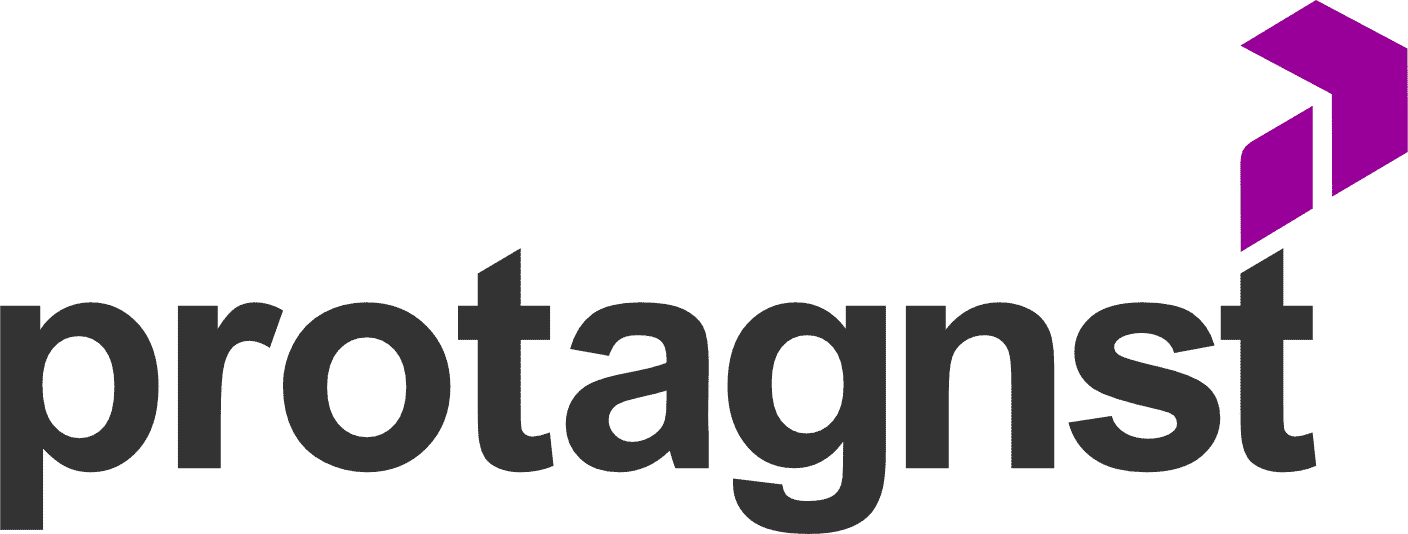Social media is a powerful presence in our daily lives. Even if you don’t have a profile on any of them—but you should at least have one on LinkedIn—you’ve likely landed on a personal profile or company page through a search engine. There’s no way around it: millions of people are on these platforms, so there’s no shortage of business opportunities. So today, we’re going to talk about social selling.
Social selling refers to using social media to boost business, whether through lead generation or as a way to increase interaction and relationships with existing customers.
Despite what the name suggests, it’s not about seeking direct sales. Occasionally, social selling can even serve as a follow-up method when cold calls haven’t yielded the expected return. The focus, however, is different.
As we’ll show throughout this article, the idea behind social selling is to strengthen relationships. And this needs to be done by offering good content, seeking friendly, non-intrusive relationships.
This strategy aligns perfectly with sales consultants who act by providing consultation—so-called consultative selling—in addition to being a great opportunity to prospect for new leads.
Mapa do Conteúdo:
ToggleWhat is Social Selling?
Social selling is a way to leverage social media to increase interaction with customers. This helps maintain relationships with them and strengthen ties, increasing sales effectiveness.
This can also be a method employed in the search for new leads, mainly because social networks have two aspects that interest us: just as they allow companies to have a space to promote their brand and products, they also put hundreds, tens of thousands of potential customers looking for what you can offer at your fingertips.
As you know, these days it’s practically impossible for any company to remain absent from social media. In B2B businesses, having a LinkedIn page is crucial. But even on networks that, at first glance, aren’t exactly business-oriented—like Facebook, Twitter, and Instagram—you need to have a presence.
So, to do social selling, you need to publish relevant content that generates engagement, but that’s not all. As we’ll show later, interacting with posts, following potential leads, monitoring what customers do on social media, and making targeted approaches are ways to work social selling.
It’s important to make it clear from the outset, however, that despite what the term “social selling” may suggest, immediate sales are NOT the objective of this technique. As we said at the beginning, the goal is to increase interaction and build relationships. The focus is on conversion work for the medium and long term.
Advantages of Social Selling
You’ve certainly heard of the sales funnel. Its function is to demonstrate what a customer’s buying journey usually looks like—although it’s not always linear or the same for all customers.
In the funnel, the top represents prospecting, lead identification, and qualification. It’s larger because it accommodates everyone who could become a customer. But from there, as you identify the real pain points of customers, the funnel narrows. Only a small portion usually end up closing a deal.
As we’ll show below, using social selling has the potential to make the traditional sales funnel smaller and with a more interesting shape for those offering products and services. Follow along.
Potential to Shorten the Sales Cycle
There are many sales techniques, ranging from lead prospecting to closing a deal. All of them are well-established and have their advantages and disadvantages. But few are capable of making the interaction with the potential customer more “human” from the start than social selling.
The interaction that social media provides is more spontaneous and, if done correctly, at the right time, can bring good results.
The seller interacts with the potential buyer more frequently and, little by little, becomes the expert on the subject in their eyes.
For example, imagine that someone interacts with your company’s post about a certain topic. You respond, clarify their doubts, and make yourself available to help them understand the topic.
This interaction could help you understand the potential client’s real needs more quickly. At the same time, it will make them move through your sales funnel faster: you don’t need the same effort to prospect and qualify the lead, because they themselves started showing interest from the first interactions.
Greater Understanding of Customer Pain Points
Social selling has everything it takes to be a strong ally for those working with consultative sales, a method that is increasingly used and tends to show better results.
Consultative selling is a strategy entirely focused on identifying and solving the problems that the customer presents. It requires a lot of contact and information exchange.
In person, this consultative selling has a higher cost and demands that both parties be willing to meet and set aside hours in their schedules. Online or over the phone, it saves on travel, but it still requires setting aside a specific time.
Conversations and interactions on social networks, as well as analysis of lead activities, in turn, help to understand the main pain points that the customer faces without necessarily taking time from either party – the conversation occurs at the opportune moment.
The essence is the same, but the fundamental gain is time. And this makes it easier for you to develop the best strategy to help them.

Increased Sales Volume
Acquiring new customers always needs to be a focus for companies, but keeping current ones is essential. And if you track the lifetime value in your company, you know what we’re talking about.
There are a number of gains when dealing with recurring customers. You already know who is responsible for purchasing at that company, how their decision-making process works, what the most effective sales strategy is, what negotiation structure they prefer, and so on. Also, once again, the sales cycle is shorter.
But there is another advantage: the greater possibility of cross-selling and upselling. After all, it’s a partnership that already has greater understanding, and both sides can make concessions in order to close a deal involving larger volumes than initially anticipated.
With social selling, these opportunities tend to become even more common. This is because, while the salesperson themselves can make occasional approaches offering to expand business, the buyer can come across an opportunity advertised by the company with which they have an agreement. Thus, the initiative to expand opportunities comes from them.
How to Do Social Selling?
An important aspect of social selling is understanding that it requires offering relevant content.
Imagine, for example, that your company has a LinkedIn page, but it’s basically “static.” It provides information about your business, but it doesn’t frequently offer content related to it. What are the chances of it generating engagement that way?
The very definition of relevant content, however, involves establishing some criteria. Therefore, below we’ll present a small step-by-step guide for your company to build a social selling strategy.
Define Your Customer
Business success demands a few factors, the two most basic being having someone to sell and having someone to buy. You have a product or service to offer, and there are certainly many other companies whose problems can be solved by what you produce. So, the question you should always know the answer to is: who is your customer?
Knowing the profile of those who do business with you is crucial to increasing sales. That’s why you need to build a persona—or buyer persona, as it’s also called.
The persona is a fictional character you create based on real behavior and data you find in your customer base. If the persona is built correctly, you’ll know if the customer is generally male or female, their age, education level, how much they usually spend, their motivations, and so on.
In the B2B business environment, defining the persona helps identify the best leads within companies that the prospecting team has identified as having the greatest potential to do business with you.
Knowing your persona is important in social selling because you become capable of producing content targeted to them. It also allows you to choose the best approach and when to make it.
Know the Social Networks
Facebook, Instagram, LinkedIn, Twitter, TikTok, YouTube… there are countless social networks these days. Some have been more enduring, while others were hugely successful for a short period and are now rarely used—or have simply disappeared.
Regardless, knowing the different social networks and their approach styles is essential for effective social selling.
We’ve already said that LinkedIn tends to be the social network with the best potential for B2B business results. After all, it’s a medium focused on professional and business purposes. This is the network where you’ll most easily find the best leads and where you can have a more assertive approach from a business standpoint.
But it’s not the only one.
Facebook, Instagram, Twitter, and YouTube, to name a few of the most well-known, have options geared exclusively toward businesses. Although these networks tend to be remembered more and are more efficient for B2C business, they can’t be completely ignored for sales in the corporate segment.
By the way, you’ve probably seen an ad on Instagram offering the opportunity to partner in some business venture.
From a social selling perspective, these networks allow you to produce content with a less formal approach. Also, sometimes your leads may have an active presence on these networks. Remember our tip about building a persona? This is precisely where it will help you in your business.

Offer Good Content
No matter the social network: if you have a business and want to prospect, engage, and maintain lasting relationships with customers, you need to offer content that piques their interest.
We’ve already mentioned in other articles that acquiring new customers is more difficult than keeping them, especially in B2B businesses. After all, in these cases, sales can involve large volumes and sums. It’s not so easy to convince someone who has never done business with you to start doing so.
Even though, on average, those with LinkedIn profiles already expect to be contacted eventually with a business opportunity, everything becomes easier if they gradually come across everything a company has to offer. The solutions, the differentiators, how that product can add value.
Posts, however, need to be frequent. Think about your favorite TV show: you know the day and time it will be broadcast. Likewise, those who follow your posts also appreciate regularity.
Remember: content marketing is primarily an inbound strategy, but it works very well when combined with outbound techniques. And social selling is a good example of this.
Make Connections, Seek Recommendations
A good way to reach new leads is to have many connections, especially on LinkedIn.
People feel more comfortable interacting with those they know—or at least those with whom they have friends or acquaintances in common.
It’s for this same reason that recommendations from friends are always welcome because they help endorse your status as an expert on a given subject.
In addition, with a good number of connections, there is always the possibility of spontaneous promotion. For example, if you publish your own content on your profile, and that content is shared by friends, it will reach other connections you didn’t have—and the chance of boosting business increases.
Approach Techniques
There’s no manual on how to approach potential clients when doing social selling, but there are best practices worth following. One is also a matter of etiquette: if your lead has a LinkedIn profile, use that to discuss business, not their Facebook profile or other networks.
In general, people also don’t like to be approached directly with an offer. It’s rather unpleasant to open your inbox and be immediately faced with someone trying to sell you something.
As mentioned earlier, social selling is not about immediate sales, but about building relationships.
Therefore, instead of offering a product, offer content or an opportunity for information exchange. “I’d like to introduce you to an innovative product that our company offers” is more elegant than “Don’t miss out on buying the innovative product that our company offers,” wouldn’t you agree?
Another important point is to make the most of the functionalities and options that social networks offer.
LinkedIn is the main network for B2B social selling.
We’ve already emphasized that the first step should always be defining a persona. Well, the next immediate step—even better if it’s done together—is for your company to stand out on the network. To be *the* brand when it comes to what it has to offer.
LinkedIn’s own research has already shown that decision-makers tend to negotiate on the platform with companies that are considered market leaders. And your company doesn’t have to be the top seller to be considered a leader; it needs to show that it is recognized.
To do this, create original content frequently, promote engagement, and interact with everyone who shows interest.
Also, don’t hesitate to occasionally share quality content produced by other companies or experts. For example, if you work in the solar energy industry, share articles and reports from reputable news organizations on the topic. This demonstrates that, more than being an expert on the subject, your company is aware of what’s happening in the world and willing to share all kinds of information.
Another important point: have an attractive LinkedIn profile. Just stating your name and position isn’t enough.
Imagine, for example, that you’re looking for a doctor in a specialty you’ve never sought before. You pick up your health insurance directory and find 20 names. How will you decide on one? Probably by researching their background or seeking recommendations, right?
The same is true for those seeking professional contact on LinkedIn. The chances of someone interacting with you are greater if they know your experience and what you can offer beforehand.
Facebook, Instagram, Twitter, and Others
Social selling on Facebook or other social networks isn’t much different from LinkedIn, but you need to pay attention to the profile of each network and, especially, what they can offer.
Facebook, for example, offers an opportunity for lead generation and expansion of existing relationships that other networks don’t: groups.
Facebook groups bring together people with common interests, and if that interest has to do with the solutions your company offers, opportunities can arise at any time.
Propose discussions on the topic, respond to existing discussions. Show that you are knowledgeable about the subject and have the solutions people are looking for.
On Instagram, the focus has to be on high-quality images. Remember: it’s primarily a visual network. People are there to see pictures. Communication needs to be effective through the eyes.
Also, be sure to use stories and occasionally host live streams. Both tend to generate good engagement.
And on Twitter, seek engagement with posts related to your area of expertise. Comment on news, make comments about business opportunities, invite followers to discuss a certain topic.

Social Selling Tools
Having a presence on social media to expand sales opportunities is important. After all, as you know, there can be thousands of business opportunities “hidden” among the profiles that make up the platforms.
We’ve already shown that having a strong profile, generating engagement, and having a good number of connections helps. However, even if you have all of this, countless other chances to increase sales are still lost. But how can you access a good portion of them?
The best way is to use prospecting tools. They automate processes and allow you and your company to connect directly with good leads. Here are a few of them:
Ramper
Protagnst is an official partner of Ramper. We started our partnership when we pivoted our brand Intern Brazil to offer sales consulting.
In Brazil, Ramper is the best B2B sales prospecting tool for generating qualified leads. It automates several stages of the lead prospecting process. Ramper allows you to capture contacts on social networks, which will later help you create lists, approaches, and follow-up.
If you want inside sales consulting to help you operate Ramper, please fill out our form.
Dux-Soup
Dux-Soup is a tool that automates some LinkedIn activities. It lets you find, attract, and interact with potential clients. In other words, Dux-Soup provides leads in much less time than normal prospecting. This is because it monitors all the profiles you visit.
When any of these potential clients show real interest in what your company has to offer, you can start doing social selling with them personally.
Social Selling Index (SSI)
Part of LinkedIn Sales Navigator, the Social Selling Index (SSI) is an indicator created by the platform itself that helps you understand your positioning on the social network.
With a simple click, the SSI gathers information such as the potential of your professional brand, how much a person interacts and contributes with their posts, comments, publications, and shares, and your ability on LinkedIn to build relationships and strengthen your credibility.
Find That Lead
This is a tool whose objective is to find the lead you should initiate contact with. It can be integrated with LinkedIn.
All you have to do is enter the company’s full name and website address. From there, Find That Lead finds the correct email address of the person you’re looking for.
Pay Attention to Metrics
We’ve reiterated in countless articles the importance of monitoring sales metrics, all of them. It could be the conversion rate, the lifetime value, the Customer Acquisition Cost (CAC)… In short, all metrics are important because they show whether your sales strategy is effective.
The same is true in social selling.
There are some tools that generate reports on your performance on social media. LinkedIn, even on personal profiles, provides basic information such as percentage of interactions, interest, and so on.
On Facebook and Twitter, for example, accounts—especially business accounts—give access to reach, engagement, and other reports. Monitoring these metrics allows you to assess your performance over the weeks.
Has the number of interactions increased? Has there been greater engagement? Great, that’s a sign you’re doing social selling correctly. Has your profile lost strength? It’s time to review your activity on social media or your approach method.

Final Considerations
Those in sales know how difficult it is to acquire new customers. Keeping those with whom you’ve already done business is usually a less arduous task, but the economic climate is always an additional obstacle. Therefore, you need to be very resilient and not let opportunities slip away.
Social networks are a great environment for business. In relationships between companies, the focus generally falls on LinkedIn—which, ultimately, is the best option. But even other networks are business opportunities. After all, people follow brand profiles they like and interact with them.
The concept of social selling involves knowing how to make the most of the opportunities that these platforms offer. Producing content, interacting with leads and customers, being present without being intrusive is a way to prepare the ground for future business. It’s worth investing in.
Hire a B2B Prospecting Company
Want to maximize the potential of social selling? Rely on the support of a company focused on prospecting new customers and generating new business opportunities.
Protagnst specializes in B2B lead generation and corporate client acquisition for business-to-business negotiations.
Fill out the form below, tell us a little about yourself, and together we can create the best strategy for your business.




